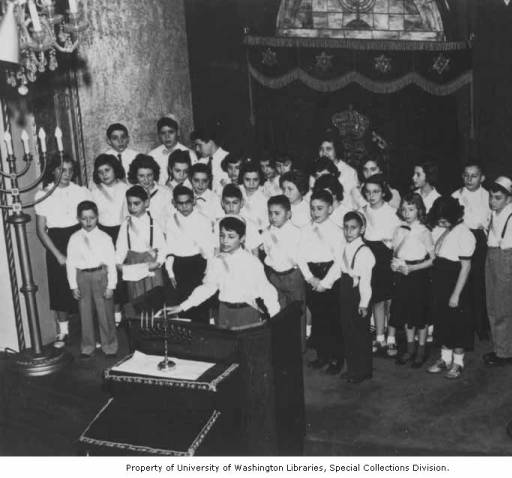By Rabbi Marc D. Angel, Institute for Jewish Ideas and Ideals
The Shabbat of Hanukkah was observed among Sephardim of the Ottoman Empire as “Shabbat Halbashah,” the Shabbat of providing clothing for the needy. Traditionally, the rabbi would deliver a sermon that day on the mitzvah of charity and lovingkindness. Beginning the following day, members of the community would bring clothing to the synagogue and it would be distributed among the poor on Rosh Hodesh Tebet, the sixth day of Hanukkah.
A practical reason for this custom is that Hanukkah occurs just as winter approaches. It is imperative that the community provide clothes for members who lack adequate clothing to keep them warm during the cold season. Moreover, Hanukkah celebrates the sense of unity that prevailed among those Jews of antiquity who fought against the Syrian-Greek oppressors, and who re-dedicated the Temple in Jerusalem. Just as our ancestors recognized their responsibility to each other and to God, so must Jews of each generation recognize our commitment to each other and to God.
A Judeo-Spanish proverb states: “el harto no cree al hambriento” — one who is full does not believe one who is hungry. When one lives in relative prosperity, it is not always easy to feel empathy for those who lack basic necessities. People become complacent. Or they say, “I worked for what I have, let the others work for what they lack. Why should I give my hard-earned money to help others?” The one who is satisfied might not feel the genuine hunger pangs of the poor, and might not respond eagerly or compassionately enough.
In his story “Gooseberries,” Anton Chekhov writes: “There ought to be behind the door of every happy, contented man someone standing with a hammer continually reminding him with a tap that there are unhappy people; that however happy he may be, life will show him her laws sooner or later, trouble will come for him — disease, poverty, losses, and no one will see or hear, just as now he neither sees nor hears others. But there is no man with a hammer…”
Shabbat Halbashah serves as a “hammer,” a reminder that we are all responsible for each other, that we need to provide for others just as they will need to provide for us if we should be in distress.
The lesson surely applies to providing material support for those in need. But I believe it can be extended to spiritual, intellectual, cultural, communal life as well. The Jewish community sponsors a host of institutions dedicated to promoting Jewish life — synagogues, schools, cultural organizations, communal agencies, etc. These institutions attempt to look after our spiritual lives, and to provide services and comfort to all of us. Just as we must be sensitive to the physical needs of the poor, so we must be sensitive to the spiritual needs of our entire community. It is so easy to say, “Let others support these institutions, let others pay for these needed services, let others take responsibility for a flourishing Jewish communal life.”
Shabbat Halbashah serves as a “hammer” gently tapping on the wall, reminding us to become empathetic, involved, and sharing members of our community. There are so many challenges facing the Jewish community; each of us needs to play an active role in strengthening and advancing our goals.
As we observe Hanukkah, let us remember to provide sustenance to those in physical need, and to provide sustenance for the spiritual needs of our entire community — since all of us need and benefit from the institutions that foster Jewish life at its best.
This article originally appeared on the website of the Institute for Jewish Ideas and Ideals, jewishideas.org.
